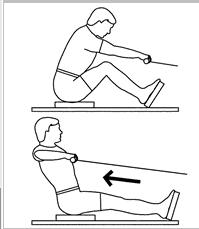 Today we'll focus on the upper back musculature in regards to stretching. The upper back is loaded with a variety of muscles which help the scapula, shoulders and arms complete the many complicated movements we perform with our arms each day. Several of the muscles also connect to the spine in the neck, base of the skull and between the shoulder blades.
Today we'll focus on the upper back musculature in regards to stretching. The upper back is loaded with a variety of muscles which help the scapula, shoulders and arms complete the many complicated movements we perform with our arms each day. Several of the muscles also connect to the spine in the neck, base of the skull and between the shoulder blades. Due to the complexity and multi-layered nature of the muscles in this area, it is often a region with many injury and soreness problems (second only to the lower back in injury statistics).
Rather than go into a lengthy discussion about each muscles specific function and movement, I will provide a variety of stretching exercises for this entire region of the back which are effective and important to perform to warm up for any type of exercise or activity involving the arms or upper back.
Horizontal adduction stretch
Overhead Triceps and Lat stretch
Scapular Retraction stretch

Overhead Shoulder stretch























 Intermediate Quad Stretching
Intermediate Quad Stretching Advanced Quadriceps Stretches
Advanced Quadriceps Stretches




 These stretches can be done for several repetitions as well as any other stretch. Remember, treat your Hammies right, and they will treat you right!
These stretches can be done for several repetitions as well as any other stretch. Remember, treat your Hammies right, and they will treat you right!


